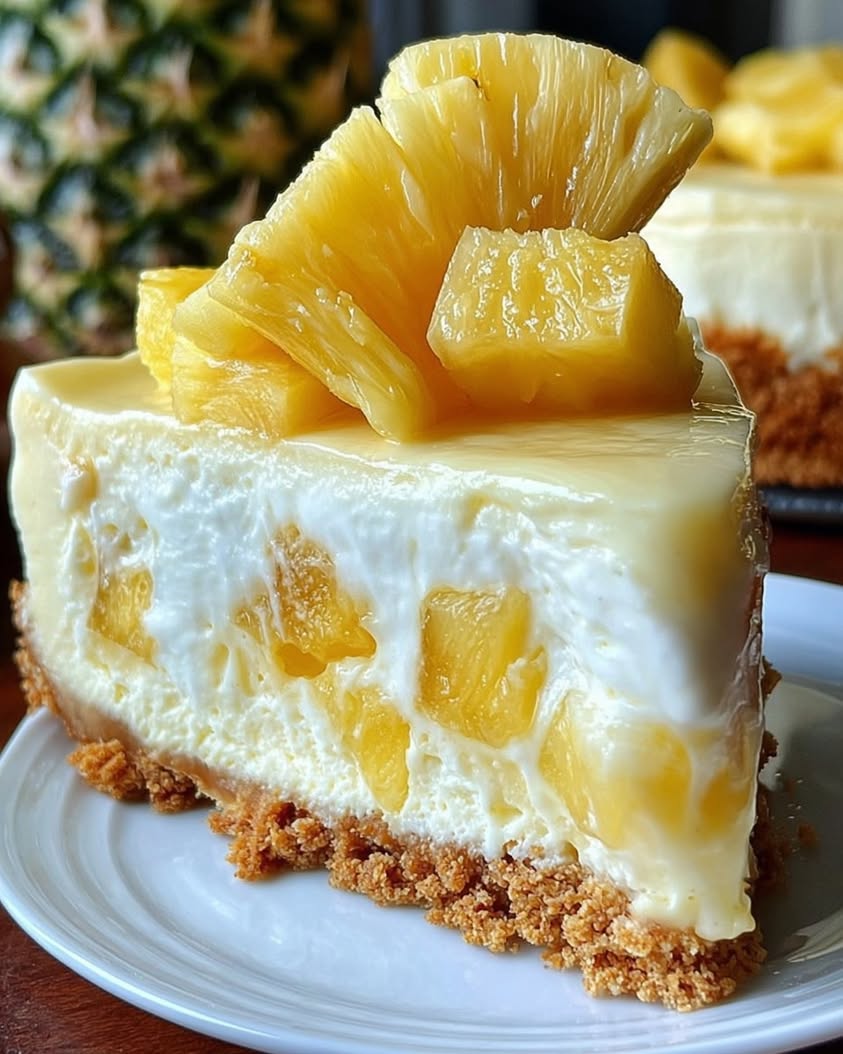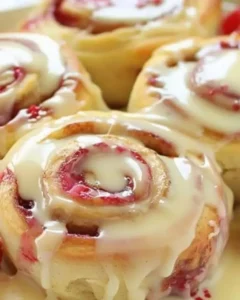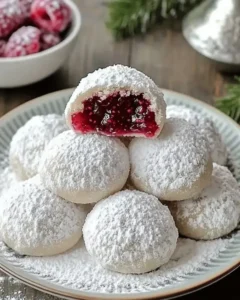No-Bake Pineapple Mousse Cheesecake: A Tropical Delight
Discover the ease and tropical allure of this No-Bake Pineapple Mousse Cheesecake, a dessert that brings a burst of sunshine to your table. This culinary delight transforms the classic cheesecake into a refreshing treat, perfect for warm days and special occasions. With its smooth, creamy pineapple-flavored mousse resting on a buttery crust, every bite promises a taste of paradise.
Prepare to indulge your senses with a cheesecake that’s not only incredibly satisfying but also visually stunning. The vibrant layers of this no-bake dessert showcase a palette of colors that complement its tropical taste. As the gentle aroma of pineapple fills your kitchen, you’ll find yourself transported to sunny, exotic locales. Whether you’re a seasoned baker or just starting, this No-Bake Pineapple Mousse Cheesecake is an approachable yet impressive dessert.
Quick Recipe Highlights
- Flavor Profile: Bursting with fresh pineapple sweetness, balanced with a creamy texture that melts in your mouth, offering a harmonious marriage of fruity and indulgent flavors.
- Texture: The cheesecake boasts a silky mousse consistency sitting atop a crunchy, buttery crust, providing a delightful contrast with every bite.
- Aroma: A gentle, tropical fragrance primarily governed by pineapple, complemented by subtle hints of vanilla that invite you in.
- Visual Appeal: Stunning layers of pale yellow mousse contrasted against a golden crust, often garnished with pineapple slices or mint leaves for added flair.
- Skill Level Needed: Simple enough for beginners, the process requires basic mixing and cooling, with no baking skills needed.
- Special Equipment: A springform pan is ideal for the best presentation, along with a mixer for the mousse.
Recipe Overview
- Difficulty Level: The simplicity of assembly and the absence of baking make it attainable for novice dessert enthusiasts while still providing a gratifying outcome for seasoned chefs.
- Category: It falls under Desserts, particularly Cheesecake and No-Bake segments, appealing to those seeking a delightful treat without the need for an oven.
- Cuisine: Though a modern dessert, its tropical qualities are reminiscent of Hawaiian or Caribbean influences, capitalizing on the refreshing allure of pineapple.
- Cost: Relatively inexpensive, with the majority of ingredients being pantry staples, except for the fresh or canned pineapple.
- Season: Best enjoyed in spring and summer, when the fresh flavors and chilled texture can be most appreciated.
- Occasion: Ideal for picnics, summertime gatherings, or as a light ending to an al fresco dining experience.
Why You’ll Love This Recipe
Taste and Texture Appeal: The No-Bake Pineapple Mousse Cheesecake combines the luscious flavor of ripe pineapple with a creamy, melt-in-the-mouth mousse. Its smooth texture is paired perfectly with a crisp, buttery crust, creating a delightful balance in every spoonful. Each bite is a tropical escape, making it a beloved choice for those seeking light yet indulgent desserts.
Convenience and Preparation Benefits: Being a no-bake dessert, this cheesecake minimizes kitchen time, requiring only a few straightforward steps. The ease of preparation gives it an advantage over traditional cheesecakes, making it suitable for those short on time or kitchen space. Its simple preparation is complemented by the use of easily accessible ingredients.
Nutritional Advantages: Pineapple is a rich source of vitamins and antioxidants, particularly vitamin C, which boosts the immune system and skin health. The use of fresh pineapple in the mousse adds nutritional value, while options to substitute lighter cream cheese can reduce overall calories and fat content, making this dessert a somewhat healthier alternative.
Social and Entertaining Value: A crowd-pleaser by nature, this cheesecake can be the centerpiece at summer parties, gatherings, and family dinners. Its no-bake requirement means it can easily be prepared in advance, allowing for effortless entertaining. Guests will marvel at the delicious, refreshing taste and impressive presentation.
Cost-effectiveness and Accessibility: Most ingredients in this dessert are pantry staples, which translates to a lower overall cost. By using either canned pineapple or fresh, depending on availability and seasonality, one can easily keep costs down. With minimal equipment needed, it’s accessible to bakeries of all skill levels without the need for special tools.
Historical Background and Cultural Significance
Origin Story: The roots of this recipe can be traced back to the evolution of cheesecakes which historically varied between cultures, with traditional cheese curds evolving into cream cheese desserts. This no-bake version marries the Western cheesecake concept with tropical ingredients, making it ideal for festive celebrations.
Cultural Importance: Pineapples, celebrated as symbols of hospitality and welcome, give this dish a unique cultural significance. Often associated with warmth and friendliness, incorporating pineapple into a cheesecake elevates it from an everyday dessert to a dish with cultural resonance, particularly in tropical regions.
Evolution of the Recipe: While traditional cheesecake recipes required baking, modern no-bake versions arose in the 20th century to accommodate busy lifestyles and the desire for faster cooking methods. This adaptation allowed for more creative flavors and textures, like the pineapple mousse, enhancing the classic recipe’s appeal.
Regional Variations: This recipe is highly adaptable, with similar desserts incorporating regional fruits like mangoes, passion fruits, or even citrus variants. In different regions, the crust can be adapted using local biscuits or crackers to suit cultural tastes, demonstrating its universal appeal and adaptability.
Ingredient Deep Dive
Pineapple: Pineapple has long been celebrated in tropical cuisines and is revered for its sweet, tangy flavor. It adds an exotic flair to dishes, providing a perfect vehicle for vibrant summer flavors. Nutritionally, pineapple is lauded for its high vitamin C content and digestive benefits due to the enzyme bromelain.
Cream Cheese: Cream cheese, a staple in many cheesecake recipes, is valued for its creamy, slightly tangy flavor. Originating from dairy-rich regions, its use in this recipe provides a luscious mouthfeel. It’s important to choose quality cream cheese to ensure smooth texture and taste, while low-fat options offer lighter alternatives.
Graham Crackers: The foundation of the crust is typically a mixture of graham crackers, which contribute a light sweetness and crumbly texture ideal for supporting the airy mousse. Originating as a simple snack, these crackers provide a versatile base, adaptable to suit different flavor profiles or dietary needs.
Common Mistakes to Avoid
Overmixing the mousse, which can break down the texture, resulting in a runny consistency.
Not cooling the crust properly before adding the mousse, leading to a soggy bottom.
Using overly ripe pineapple can lead to excessive moisture in the mousse, affecting its firmness.
Skipping the chilling process; insufficient chilling time leads to a mousse that doesn’t set properly.
Neglecting to fold ingredients gently; aggressive mixing can deflate the mousse airy texture.
Selecting low-quality cream cheese which could affect taste and texture adversely.
Incorrectly measuring gelatin or substitutes that could impact the mousse set.
Misjudging serving size; cutting servings too large could make the dessert overpowering.
Not using a springform pan; making unmolding more difficult and damaging the cake’s appearance.
Forgetting to taste adjust; not balancing sweet and tangy elements when using fresh pineapple.
Essential Techniques
Proper Mousse Folding: Folding technique is critical to ensure the mousse retains its airy nature. By gently folding the whipped cream and pineapple together, you preserve airiness, crucial for the perfect texture. Always use a wide spatula and smooth motions to integrate ingredients delicately.
Crust Compaction: Pressing the graham cracker mixture firmly into the pan ensures the crust stays together, offering a solid foundation for the mousse. Use a flat-bottomed glass to pack the crumbs evenly, which helps it cut cleanly without falling apart during serving.
Gelatin Application: Mastering the use of gelatin is essential for anyone making a mousse. Allow the gelatin to bloom fully in cold water before dissolving it in warm liquid to prevent lumpy textures. This step helps the mousse set properly, providing structure without altering the flavor.
Pro Tips for Perfect No-Bake Pineapple Mousse Cheesecake
Ensure all ingredients are at room temperature before mixing; this allows them to blend more smoothly, creating a more uniform mousse.
Chill the crust thoroughly before adding mousse – at least 30 minutes – to create a firm base that will hold its shape when cut.
Add a hint of lemon juice to the mousse for enhanced tang and to balance overall sweetness, especially if using very ripe pineapple.
Decorate just before serving with fresh elements such as mint or a sprinkle of zest to elevate visual appeal and aromatic freshness.
For extra firmness in warmer climates, add an extra half packet of gelatin, ensuring it gels completely without altering taste.
Prepare a day ahead to allow the flavors to meld together. The mousse will firm up beautifully, presenting the cheesecake at its best.
Use a hot, dry knife to slice the cheesecake for cleaner cuts and to avoid sticking. Warm the knife under hot water and dry before each slice.
Store leftovers in an airtight container to keep the mousse from absorbing any unwanted refrigerator odors, maintaining freshness and taste.
Variations and Adaptations
Regional Variations: Try swapping pineapple for local fruits such as mango in tropical regions or cherries in more temperate areas. These variations can offer unique twists and allow adaptation to local tastes and seasonal availability.
Seasonal Adaptations: Depending on the season, incorporate seasonal fruits for decorating or blending into the mousse. In winter, citrus fruits offer a great balance, while summer berries provide refreshing accents.
Dietary Modifications: To accommodate dairy-free diets, consider using coconut cream or a dairy-free cream cheese alternative. For a gluten-free version, substitute the graham crackers with gluten-free cookies or nuts.
Flavor Variations: Enhance the flavor profile by adding toasted coconut flakes or a splash of rum extract to the mousse, which pairs remarkably well with the pineapple flavor, offering a taste of the tropics.
Texture Modifications: For those preferring a denser consistency, reduce the whipped cream or use mascarpone cheese for a richer texture. A firmer mousse can also be achieved by increasing the gelatin.
Presentation Alternatives: Serve in individual jars or ramekins for a creative look, especially useful for picnics or parties. This option also serves as an excellent means for portion control and easy transport.
Serving and Presentation Guide
Plating Techniques: Serve slices on chilled plates to keep the mousse firm and refreshing. Use a warm knife for slicing neat, precise portions, and transfer carefully using a wide spatula.
Garnishing Ideas: Adorn with freshly cut pineapple wedges or curls of toasted coconut. Edible flowers provide an elegant touch, while a drizzle of pineapple coulis can accent the top for added color and flavor.
Traditional Accompaniments: Pair with a dollop of lightly sweetened whipped cream or a scoop of tropical sorbet to enhance the fruity notes, providing a refreshing taste contrast.
Modern Serving Suggestions: Create a dessert platter with individual mini cheesecakes alongside tropical fruits for a dazzling summer display, encouraging guests to sample a variety of flavors.
Temperature Considerations: Ensure the cheesecake is served well chilled for the best texture, allowing the mousse to maintain its consistency and the flavors to remain vibrant and refreshing.
Portion Control Tips: Cut slices proportionally to appetites; smaller cuts are suitable for lighter meals or buffets. Use a template or guideline to ensure uniform piece sizes for an attractive presentation.
Wine and Beverage Pairing
Wine Pairings: This cheesecake pairs beautifully with a sweet dessert wine or a light, fruity white such as a Moscato or prosecco, enhancing its tropical flavors without overpowering its lightness.
Non-alcoholic Alternatives: Serve with a chilled pineapple or mango spritzer, where the effervescence complements the creaminess of the mousse while echoing the dessert’s tropical roots.
Coffee/Tea Pairings: A light herbal tea, such as chamomile, balances the richness of the cheesecake. For coffee lovers, a mild, lightly roasted coffee serves to refresh the palate with its subtle flavors.
Temperature Considerations: Whether serving wine or non-alcoholic beverages, keep them chilled to highlight their refreshing notes, harmonizing well with the chilled cheesecake.
Serving Suggestions: Offer drinks in appropriate glassware; a delicate flute for sparkling wine or a stemless glass for teas and juices ensures a cohesive dining experience.
Storage and Shelf Life
Storage Methods: Keep the cheesecake covered in the refrigerator to prevent it from picking up any unwanted aromas and ensure it maintains its integrity. Opt for either an airtight container or wrap tightly in plastic wrap.
Temperature Requirements: Store at a consistent cold temperature, ideally below 40°F (4°C), to maintain the mousse’s texture and freshness, especially in warmer climates.
Container Recommendations: Use a container only slightly larger than the cheesecake to minimize exposure to air, preserving the freshness of both the mousse and crust.
Signs of Spoilage: Look for any changes in the texture or aroma; a sour smell or separation of the mousse indicates spoilage. Discoloration is another sign that the dessert has gone bad.
Reheating Instructions: For the best experience, do not attempt to heat this dessert. Instead, allow it to come to room temperature for 5-10 minutes before serving for optimal texture.
Freezing Guidelines: While traditionally cheesecakes can be frozen, the mousse’s consistency may change. If freezing, do so without garnish and in a freezer-safe container, allowing 2-3 hours of room temperature to thaw.
Make Ahead Strategies
Prep Timeline: Prepare the crust one to two days ahead, storing in the refrigerator to provide a solid chilled base. Assemble the mousse at least a day before serving to allow proper setting.
Storage Between Steps: Keep the crust adequately covered and refrigerated after forming; similarly, refrigerate the filled pan until firmly set, avoiding exposure that could affect texture or taste.
Quality Impact Assessment: As a make-ahead dish, this cheesecake actually improves with time, given well-planned chilling periods for flavors to develop and stabilize.
Assembly Tips: Assemble within the pan as directed, using parchment paper for easy removal. Adorn with fresh toppings just before serving for optimal freshness and appearance.
Reheating Guidelines: If left at room temperature for too long, pop into the fridge and allow to firm up slightly before serving to ensure consistency and structure are intact.
Fresh Element Additions: Add garnishes like fresh mint or fruit slices at the last moment to avoid wilting or altering in taste and appearance, ensuring a fresh, vibrant finish.
Scaling Instructions
Halving the Recipe: Easily halve ingredients for smaller gatherings or personal servings without impacting texture or flavor. Use smaller pans to keep height and presentation similar.
Doubling or Tripling: When doubling, remember to increase ingredient volumes proportionately, especially gelatin, to ensure proper setting. Use a larger pan for uniform thickness or multiple smaller pans.
Equipment Adjustments: Larger quantities might require bigger mixing bowls or more robust electric mixers to maintain efficiency. A cake ring is useful for even larger-scale servings.
Timing Modifications: Give additional time for larger cakes to set, allowing the mousse to chill thoroughly. Prepping ahead of schedule is beneficial for optimal results.
Storage Considerations: Ensure ample fridge space to store larger quantities, and if freezing, do so in portions to allow for easy thawing and serving, maintaining texture and flavor integrity.
Nutritional Deep Dive
Macro Breakdown: A typical slice offers a balanced ratio of carbohydrates from the crust, protein from cream cheese, and fats from the dairy elements, providing a delightful yet rich dessert option.
Micronutrient Analysis: Rich in vitamin C from pineapple, this cheesecake offers antioxidant benefits, while moderate dairy content contributes calcium, although consumption should be mindful of sugar content.
Health Benefits: Pineapple provides digestive enzymes which support gut health, while balancing indulgence with easily adjustable portions supports calorie-conscious eating.
Dietary Considerations: While rich and satisfying, this dessert can be adapted to fit dietary needs, including low-fat dairy options or increased fresh fruit for increased fiber content.
Portion Analysis: Mindful portion sizes can help manage calorie intake, allowing for guilt-free enjoyment without sacrificing taste and texture satisfaction.
Weight Management Tips: Pair moderate portions with active, balanced lifestyles, or enjoy post-exercise for balanced energy restoration, focusing on savoring every bite.
Dietary Adaptations
Gluten-free: Use gluten-free graham crackers or a nut-based crust to maintain texture while meeting gluten restrictions effortlessly, avoiding cross-contamination.
Dairy-free: Swap cream cheese with coconut cream or cashew-based alternatives to cater to lactose intolerance, ensuring a smooth, creamy mousse experience.
Vegan: Seek vegan mascarpone, coupled with agar-agar instead of gelatin, providing a similar texture and plant-based bliss without compromising on taste.
Low-carb: Use almond flour or other low-carb options for crust, pairing with sugar alternatives like stevia to reduce carbohydrate content while maintaining sweet indulgence.
Keto: Ensure the use of keto-friendly sweeteners and nut-based crust to adhere to diet plans; coconut cream and fresh pineapple offer texture and taste without excess carbs.
Paleo: Substitute crust ingredients with nuts or seeds, utilizing minimally processed coconut sugar and fresh fruits, aligning with prehistoric dietary principles.
Low-FODMAP: Adjust fruit to acceptable alternatives such as strawberries, ensuring digestive-friendly snacks for those following FODMAP structures without discomfort.
Other Specific Diets: For allergies or special diets, consult ingredient labels carefully, choosing alternatives that ensure safety without sacrificing enjoyable dessert moments.
Troubleshooting Guide
Texture Issues: If mousse isn’t setting, check gelatin quantities and bloom time to ensure thickening. Unset mousse can point to under-chilling or ingredient errors.
Flavor Balance: Taste at mixing points and adjust with lemon juice or sweeteners to maintain harmony. Stronger flavors can be softened with additional cream.
Temperature Problems: Rapid temperature changes can upset mousse; ensure consistent refrigeration and gradual cooling. Avoid drastic room temperature shifts.
Equipment Challenges: Ensure kitchen appliances are in proper working order, especially mixers, to aerate mousse efficiently. Faulty equipment may result in uneven texture.
Ingredient Substitutions: When swapping ingredients, consider moisture content adjustments, especially in creams and gels to retain structure and taste integrity.
Timing Concerns: Allow ample setting time in fridge, ensuring consistency, especially with gelatin. Premature serving can compromise taste and appearance.
Recipe Success Stories
Community Feedback: Readers have shared delight in the simplicity and elegance of this no-bake recipe, enjoying its vibrant taste and effortless preparation which often garners praise during events.
Variation Successes: With creative spins using local fruits, enthusiasts have found success in personalizing flavors, creating unique, regionally appropriate dinner party desserts.
Adaptation Stories: Many have lauded dietary adaptations for accommodating varied needs without sacrificing taste; dairy-free attempts frequently receive appreciation from lactose-sensitive families.
Reader Suggestions: Substitutions like nuts in crust or low-calorie sweeteners have proven successful, demonstrating this cheesecake’s versatility and universal appeal across demographics.
Photography Tips: To capture its beauty, natural lighting and overhead shots highlight the inviting colors and textures, reflecting the cake’s allure in both personal blogs and social media.
Frequently Asked Questions
Can I use canned pineapple instead of fresh? Yes, canned pineapple can be used. Ensure it is well-drained to prevent excess moisture, which can affect the mousse setting.
What is the best way to crush graham crackers for the crust? Use a food processor for fine, even crumbs. Alternatively, seal crackers in a bag and crush with a rolling pin for a more rustic texture.
How long can this cheesecake be stored in the fridge? Properly covered, it can last up to five days, though it’s best enjoyed within three days for the freshest taste and texture.
Is it possible to make this recipe without a springform pan? Yes, a pie dish can be used, though presenting slices may prove more challenging without a removable side.
Can I replace gelatin with a plant-based alternative? Yes, agar-agar can substitute gelatin, though bloom and gelling instructions may differ slightly, so follow specific product guidelines.
Will using low-fat cream cheese affect the flavor? It may result in a slightly less rich taste, though it’s still delicious. Adjust sweetness and tang with added vanilla or citrus to compensate.
Is there a substitute for whipped cream in the mousse? Whipped coconut cream serves as an alternative, offering a similar texture and contributing a gentle coconut note to flavor.
How can you prevent the cheesecake from sticking to the sides of the pan? Use a parchment paper lining or run a warm butter knife around the edge before releasing to avoid messy edges.
Can this cake be customized with other fruit flavors? Absolutely, swap pineapple with similar juicy fruits like mango or peach for varying flavor profiles, ensuring texture consistency.
What is the ideal step to prepare first for smooth execution? Start with the crust to allow sufficient chilling time while concocting the mousse, ensuring a well-set foundation for supple layers.
Additional Resources
Related Recipes: Interested in tropical-inspired desserts? Try our Coconut Mango Panna Cotta or Passionfruit Pavlova for a similar tropical sunshine delivery.
Technique Guides: Brush up on folding techniques and gelatin specifics for flawless mousse with confidence—our detailed spoon-to-spatula instructional videos can help.
Ingredient Information: Explore pineapple’s versatile use across culinary applications; from salsa to skewers, its adaptability is endless.
Equipment Recommendations: For avid bakers, investing in a quality stand mixer and non-stick springform pan ensures effortless, consistent results.
Seasonal Variations: Discover seasonal recipe adaptations to harness nature’s harvest, creating fresh sensations all year round, aligned with local agricultural bounty.
Print
No-Bake Pineapple Mousse Cheesecake
Description
A refreshing and creamy cheesecake with a tropical pineapple twist, perfect for summer.
Ingredients
For the Crust:
- 2 cups crushed graham crackers
- 1/2 cup melted butter
- 16 oz cream cheese, softened
- 1 cup powdered sugar
- 1 teaspoon vanilla extract
- 1 cup heavy cream
- 1 cup canned crushed pineapple, drained
Instructions
1. Prepare the Crust:
- Combine the crushed graham crackers and melted butter in a bowl, mix until the texture resembles wet sand, then press the mixture into the bottom of a 9-inch springform pan to form the crust.
- In a large mixing bowl, beat the cream cheese, powdered sugar, and vanilla extract until smooth and creamy.
- In a separate bowl, whip the heavy cream until stiff peaks form, then gently fold the whipped cream and crushed pineapple into the cream cheese mixture using a spatula. Spread the mousse over the crust and smooth the top. Chill in the refrigerator for at least 4 hours or until set.
Notes
You can customize the seasonings to taste.





